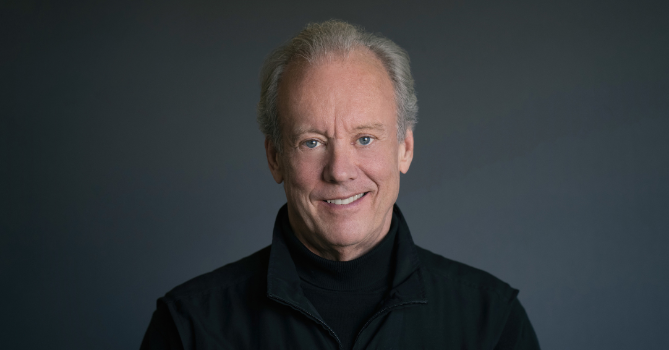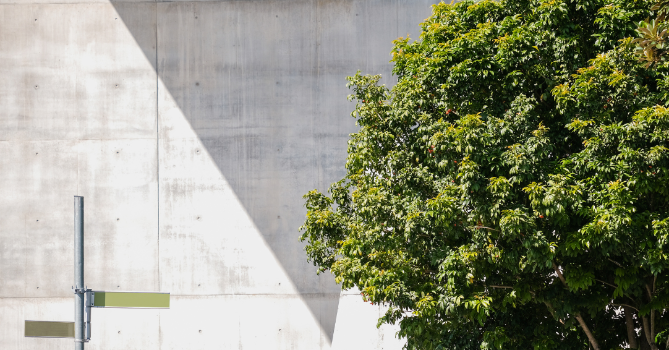.png)
Sustainable Design Excellence: Insights from William McDonough
In today's rapidly changing world, architects play a pivotal role in shaping sustainable environments for future generations. One such architect who stands out for his commitment to sustainability is William McDonough. With a career spanning decades, McDonough has championed innovative design solutions that prioritize environmental responsibility and social equity. In this article, we delve into the life and work of William McDonough, exploring his contributions to sustainable architecture and the impact of his visionary approach on the built environment. From pioneering eco-friendly materials to advocating for regenerative design principles, McDonough's influence extends far beyond traditional architectural boundaries. Join us as we uncover the inspiring story of an architect dedicated to building a greener and more sustainable future for all.
William McDonough is renowned as a trailblazer in the field of sustainable architecture, consistently pushing the boundaries of what is possible in eco-friendly design. His pioneering work has earned him global recognition and numerous accolades, cementing his status as a visionary architect.
At the heart of McDonough's philosophy is the concept of "Cradle to Cradle" design, which advocates for the creation of products and buildings that mimic the cyclical processes of nature. This approach emphasizes the importance of eliminating waste and pollution, while also promoting the use of renewable resources and energy-efficient technologies.
One of McDonough's most notable projects is the Ford Rouge Center in Michigan, which transformed a once-polluted industrial site into a model of sustainable manufacturing. By integrating green roofs, natural ventilation systems, and on-site renewable energy generation, McDonough demonstrated how industrial facilities can operate in harmony with the environment.
In addition to his architectural work, McDonough is also a prolific author and speaker, spreading his message of sustainability to audiences around the world. His books, including "Cradle to Cradle: Remaking the Way We Make Things," have become influential texts in the field of green design, inspiring countless architects and designers to embrace more sustainable practices.

Looking ahead, McDonough continues to advocate for a future where buildings not only minimize their environmental impact but actively contribute to the health and well-being of occupants and ecosystems alike. With his innovative spirit and unwavering commitment to sustainability, William McDonough remains a beacon of hope for a greener, more sustainable world.
In the quest for sustainable design, architects like William McDonough are continually innovating to create solutions that prioritize environmental responsibility without sacrificing aesthetic appeal or functionality.
One of McDonough's key contributions to sustainable design is his emphasis on materials that are safe and healthy for both humans and the environment. He champions the use of non-toxic, recyclable materials in construction, ensuring that buildings have a positive impact on occupant health and well-being while minimizing waste and pollution.
McDonough also advocates for the integration of renewable energy sources, such as solar and wind power, into building design. By harnessing the natural energy of the sun and wind, buildings can significantly reduce their reliance on fossil fuels and decrease their carbon footprint over time.
Another innovative solution championed by McDonough is the concept of "designing for disassembly." Instead of creating buildings that are destined for demolition at the end of their lifecycle, McDonough promotes the use of modular construction techniques and easily recyclable materials that can be disassembled and repurposed at the end of their useful life.
Additionally, McDonough emphasizes the importance of incorporating nature into the built environment through biophilic design principles. By integrating elements such as green roofs, living walls, and natural lighting, architects can create spaces that promote human health and well-being while also providing habitat for native plant and animal species.

Overall, McDonough's innovative solutions for sustainable design demonstrate that environmentally responsible architecture is not only possible but also essential for creating a more resilient and harmonious built environment. By embracing these principles, architects can play a leading role in addressing the urgent challenges of climate change and environmental degradation facing our planet today.
William McDonough's pioneering work in sustainable architecture has had a profound impact on the modern architectural landscape. His innovative ideas and design principles have inspired architects around the world to rethink the way buildings are designed, constructed, and operated.
One of the most significant contributions of McDonough's work is his emphasis on cradle-to-cradle design, which promotes the idea that buildings should mimic natural systems and cycles. This approach challenges the traditional linear model of production and consumption, where materials are extracted, used, and then discarded, in favor of a closed-loop system where waste is minimized, and resources are continually reused and recycled.
McDonough's influence can be seen in the growing trend towards green building certification programs, such as LEED (Leadership in Energy and Environmental Design) and the Living Building Challenge, which prioritize sustainability and environmental performance in building design and construction. His ideas have also informed the development of eco-friendly building materials and technologies, such as low-impact construction methods, energy-efficient systems, and renewable energy sources.
Furthermore, McDonough's advocacy for regenerative design has spurred a shift towards architecture that not only minimizes harm to the environment but actively contributes to its restoration and regeneration. Architects are increasingly incorporating features such as green roofs, rainwater harvesting systems, and natural ventilation strategies into their designs to enhance biodiversity, improve air and water quality, and mitigate the effects of climate change.
In summary, William McDonough's impact on modern architecture is profound and far-reaching. His visionary ideas and commitment to sustainability have revolutionized the way architects approach design, leading to a more environmentally conscious and socially responsible built environment.
While William McDonough's work has undoubtedly propelled sustainable architecture forward, there are still significant challenges and opportunities ahead in the quest for a more sustainable built environment.
One of the main challenges is the widespread adoption of sustainable design principles and practices. Despite growing awareness of environmental issues, many architects and developers continue to prioritize cost and convenience over sustainability. Overcoming this mindset requires not only convincing stakeholders of the long-term benefits of sustainable design but also addressing practical concerns such as initial investment costs and regulatory barriers.
Another challenge is the need for more research and innovation in sustainable building materials and technologies. While there have been significant advancements in this area, there is still much to be done to develop truly sustainable alternatives to conventional construction materials and methods. This includes finding ways to reduce the environmental impact of materials such as concrete and steel, as well as exploring new materials derived from renewable resources.
Additionally, there is a need for greater collaboration and coordination among stakeholders in the building industry to address sustainability challenges collectively. This includes architects, engineers, contractors, developers, policymakers, and building owners working together to integrate sustainable design principles into every stage of the building lifecycle.
Despite these challenges, there are also significant opportunities ahead for advancing sustainability in architecture. With growing public awareness of environmental issues and increasing demand for green buildings, there is a growing market for sustainable design solutions. This presents architects and developers with the opportunity to differentiate themselves in the marketplace by offering innovative and environmentally responsible design solutions that meet the needs of today's society without compromising the ability of future generations to meet their own needs.
In conclusion, William McDonough's pioneering work in sustainable architecture serves as a testament to the transformative power of design in addressing pressing environmental challenges. Through innovative solutions and a commitment to Cradle to Cradle principles, McDonough has demonstrated that sustainability and design excellence are not mutually exclusive but rather go hand in hand.
As we reflect on McDonough's legacy, it becomes clear that architects have a crucial role to play in shaping a more sustainable future. By embracing McDonough's principles and integrating sustainable design practices into their work, architects can help create buildings and communities that not only minimize their environmental impact but also enhance the quality of life for occupants.
Looking ahead, there are boundless opportunities for architects to continue pushing the boundaries of sustainable design and driving positive change in the built environment. By remaining committed to innovation, collaboration, and a holistic approach to design, architects can truly make a difference in building a greener, more resilient future for all.